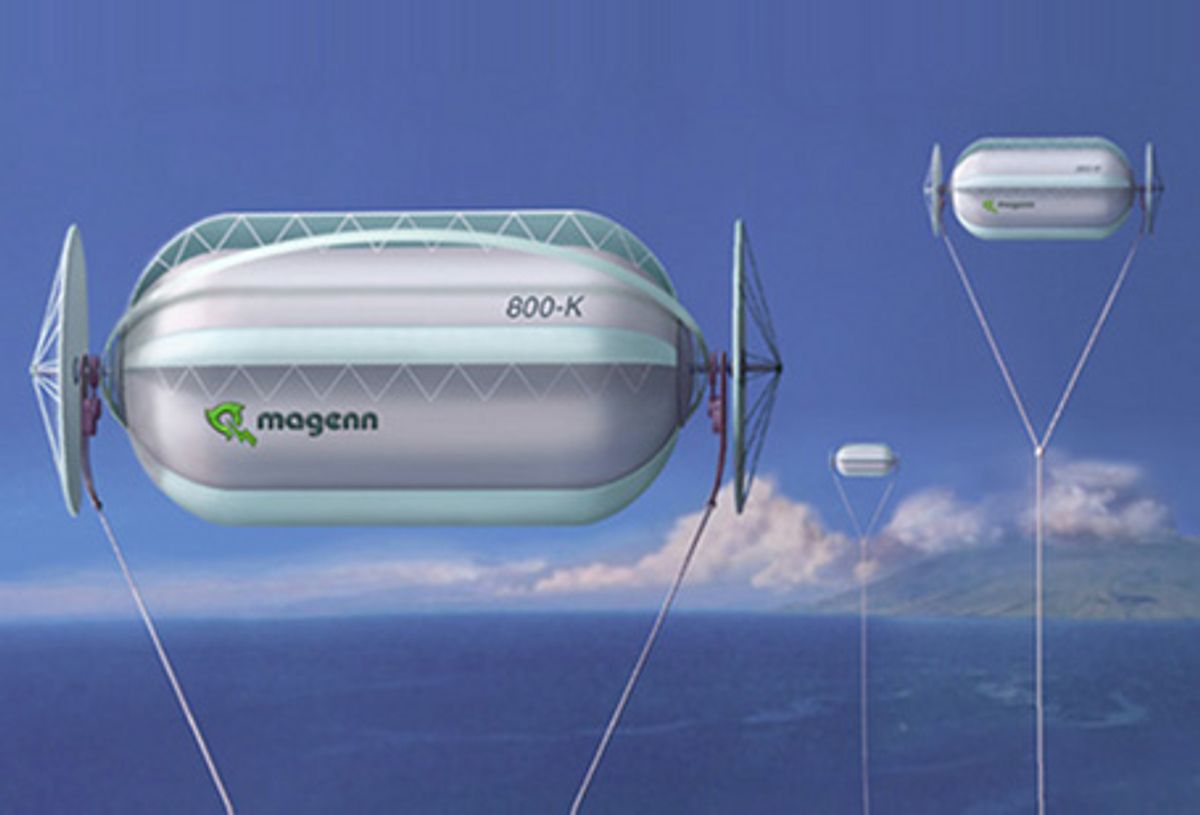Oil giant ConocoPhillips has awarded its $125,000 energy prize to a tethered, high-altitude wind power device by Adam Rein and Ben Glass, of Altaeros Energies. The device -- basically a horizontal-axis wind turbine floating with a helium-filled shroud -- can be rapidly deployed from a single shipping container in emergency situations. It flies at up to 2,000 feet above the ground, where wind is both stronger and more consistent.
The concept of tethered wind systems has its advantages, including the wind speed increase at higher altitudes as well as a potential lack of some of the location-based issues that arise with standard wind turbines. Instead of 400-foot-tall turbines that raise NIMBY problems, a thin tether holding a turbine aloft thousands of feet in the air could be nearly invisible. As the Energy Prize web site noted, the Altaeros concept might be useful in remote locations where building up traditional energy infrastructure isn't possible.
There are other designs following this idea as well. As a video here at Spectrum showed, a kite-based system could also provide high-altitude power without the traditional wind infrastructure. There is even a group called the Airborne Wind Energy Consortium for the nascent industry; they have several member companies designing different types of airborne wind devices. The Consortium quotes noted climate scientist Ken Caldeira on the incredible potential of high-altitude wind energy:
"There is enough energy in high-altitude winds to power civilization 100 times over. Sooner or later, we're going to learn to harness that vast resource and use it to run civilization."
(Image of another high-altitude wind device via Magenn Power)
Dave Levitan is the science writer for FactCheck.org, where he investigates the false and misleading claims about science that U.S. politicians occasionally make.



